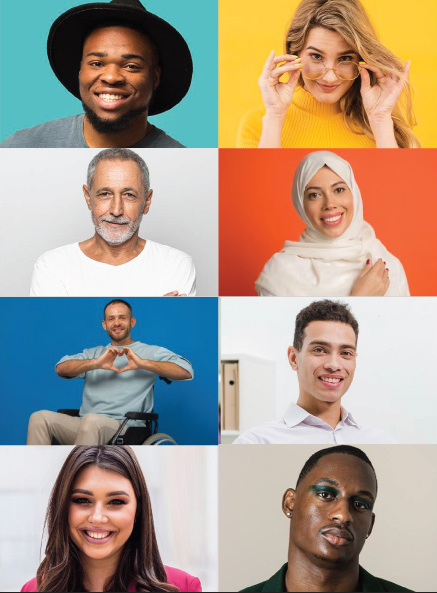Discover the impact of generational diversity in the workplace and learn how different age groups bring unique perspectives and strengths.
A timeline of historical events has shaped who we are today – our values and beliefs are born, and thus, diversity blooms. The world harnesses an array of people from various backgrounds. Some originate from the Middle East, and some from Australia. Some grew up speaking multiple languages, while others view art as a way of life. This just skims the possibilities of how people form their identities, ideals, and perspectives.
Just as there is a wide variety of backgrounds, there is also age diversity. According to Purdue Global, “For the first time in history, there are five generations in the workplace.” This includes the Traditionalists (1925-1945), Baby Boomers (1946-1964), Generation X (1965-1980), Millennials (1981-2000), and Generation Z (2001-2020). It is a beautiful thing to have so many viewpoints on the world. However, this can create challenges and disparities between people on topics such as diversity.
Generational Diversity and Communication Styles
Diversity is more prevalent than ever in today’s world, with major events revolving around the matter, such as the Black Lives Matter movement and the recent “presidential order on advancing racial equity and support for underserved communities” by President Joe Biden. The creation of Diversity, Equity, and Inclusion (DEI) was implemented in the mid-1960s. There is an apparent gap in knowledge and exposure to diversity from now compared to the early 1900s. This creates room for older generations to misunderstand younger generations in the workforce and vice versa, highlighting the importance of understanding generational diversity.
A key difference between Generation Z and others is their way of communication. The newest generation in the workforce has grown up with technology by their side. Social media is a way of outreach, public advocacy, and marketing. Gen Z’s direct exposure to technological advances creates a more diverse window for connection. However, this also means less face-to-face communication, as the Baby Boomers are used to.
Historical Context of Generational Diversity
Baby Boomers grew up in the aftermath of World War II, dealing with major consequences, such as increased awareness of discrimination and the importance of equitability. The Civil Rights Movement occurred during this time, leading to the questioning of old beliefs and traditions.
On the other hand, the Traditionalists experienced the Great Depression. It is only natural for Traditionalists and Baby Boomers to be motivated to work extremely hard, as conditions were rough. There was also less equality amongst men and women in the workforce during the early 1900s, leading to more rigid workplace rules and less room for diverse settings.
Changing Perspectives on Mental Health and Inclusivity
As time went on, stereotypes faded, and open discussions about mental health became present. Generation Z has grown up in a time of inclusivity and openness. Older generations may have the mentality of sticking with old ways when there was more close-mindedness to LGBTQ+ issues, women’s rights, mental health support, etc.
Although generations have different wants and needs, generational diversity can create harmony. New perspectives and ideas are exchanged, presenting opportunities to learn. Older generations grew up in a vastly different time and place compared to now. However, there is respect and beauty in understanding how the world worked then and how society can come together now.
Stay ahead of the curve and foster an inclusive workplace with our Diversity Calendar. Discover key cultural events, promote awareness, and support your team’s diverse needs effortlessly.



